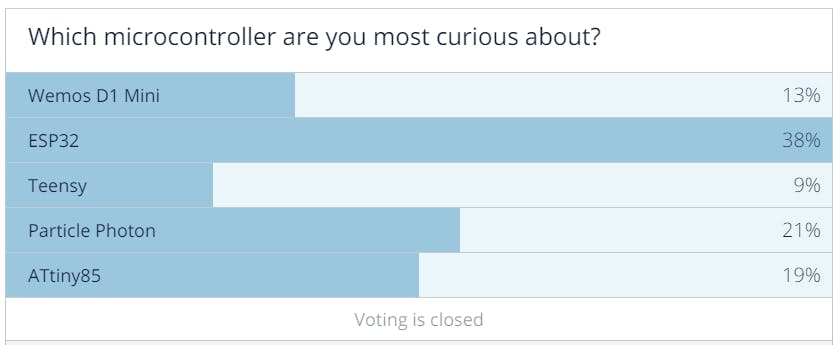
Microcontroller Roundup: Here
At the core of many electronics projects and products, you'll likely to find some sort of microcontroller. A Microcontroller is in fact a small computer on a single Integrated Circuit (IC).
Here at circuito.io, we’ve paid particular attention to one type of microcontroller: the Arduino board, which is built around Atmel’s ATMega328 chip.
The Arduino development platform is popular and accessible, making it a great point of entry into the world of microcontrollers, embedded systems and electronics in general.
With additional components, sockets and headers, the Arduino is easy to get along with, and it’s capable of serving a broad range of functions.
But of course, it also has its limitations, for example, It comes with only a fixed amount of GPIO pins; it’s relatively under-powered, and it lacks many of the features boasted by newer devices like the Beaglebone Black.
Once you've reached a certain point in your electronics expertise, you might start feeling these limitations. And that's exactly why we're writing this post to get you familiar with other microcontrollers and realize there's a wide range of alternative microcontroller boards available.
The ATMega328-powered Arduino isn’t the only option available to electronics hobbyists and developers. In fact, it's just one part of an enormous and bustling market that provides solution to different users - from makers tinkering in their garage to multinational corporations.

So what do the newer boards have to offer?
- First of all, they are mostly smaller and more powerful
- Wireless functionality and encryption are particularly popular among the more recently developed boards – and you’ll be able to use these functions without needing to expand your board with shields and other peripherals.
We’ve talked a lot about Arduino here on our blog, mainly because most of the MCUs we had up till now on circuito.io were Arduino boards. Recently we've decided to add another 32-bit microcontroller.
We narrowed down the list of options to 5, and asked you, our community, to help us choose which microcontroller we should add next.
The winning board was the ESP32. This board has built-in wireless capabilities, it's affordable and it has great documentation, and we can really understand why you chose it.

Let's take a closer look at the 5 candidates, starting with the winning board:
1 ESP32 Development Board
This prototyping board is the work of the Shanghai-based company Espressif Systems. It incorporates the ESP32, a microprocessor tailored toward wearable electronics and IoT. It boasts integrated Wi-Fi and Bluetooth, along with an array of inbuilt antenna switches, and ultra-low power consumption.
CPU - Tensilica Xtensa 32-bit LX6 @ 240Mhz
Memory - 520KB RAM, 448 KB ROM
Wireless - Built-in WiFi and Bluetooth
Dimensions - 55.3mm x 28.0mm x 12.3mm
The company released the ESP8266 chip in 2014. Costing only a few dollars, this small chip is able to bridge an Arduino with a WiFi network, solving many issues that early IoT pioneers experienced.
It captured the attention of many talented engineers, who got it to co-operate with a range of programming environments, including Arduino. Within a few months, it's popularity started rising.

The ESP8266 does have a few downsides though: it has a small amount of GPIO pins, only a few A/D converters, and it's under-powered.
These issues were addressed by the chip’s successor, the ESP32, which was launched in 2016. It brought with it an improved spec sheet and the ability to easily connect with external microcontrollers.
The central processor is a 32-bit Tensilica LX6 dual-core, clocked at 240Mhz. You’ll get just over 500kb of memory to play with, along with support for external flash drives.
Wireless connectivity comes in the form of BLE Bluetooth and 802.11 b/g/n WiFi, bundled with a robust set of cryptographic hardware tools.
In addition, there’s an ultra-low power processor that’ll perform certain functions while the device is in deep sleep, which makes the ESP32 an excellent match for battery-powered projects.


